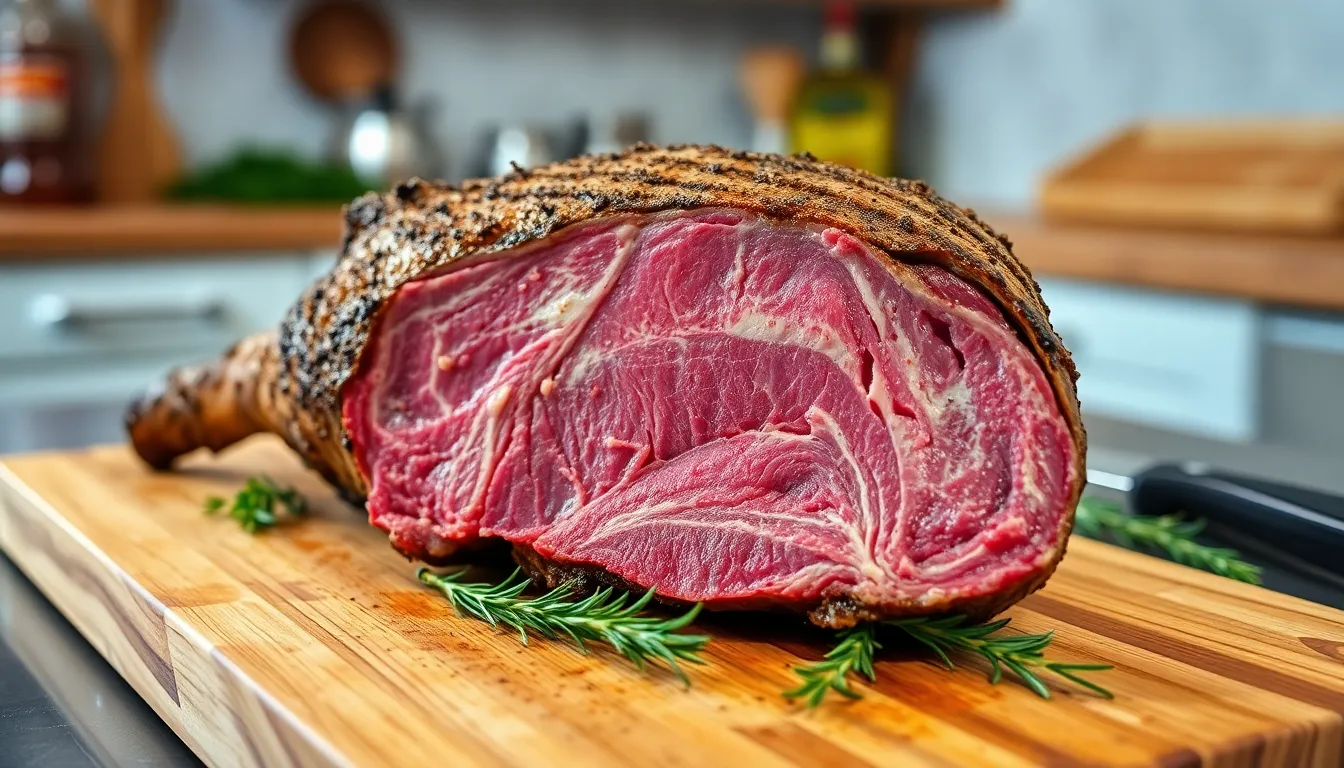
Prime rib is the crown jewel of holiday feasts and special occasions, captivating diners with its rich flavor and tender texture. This cut of beef, known for its marbling and juiciness, can elevate any gathering into a memorable culinary experience. Mastering the art of cooking prime rib not only impresses guests but also showcases a cook’s skills in the kitchen. Whether it’s a simple family dinner or an extravagant celebration, understanding the nuances of seasoning, cooking times, and techniques is essential for achieving that perfect roast. With the right approach, anyone can create a mouthwatering prime rib that will have everyone asking for seconds. Dive into the world of prime rib cooking and discover how to turn this impressive cut into a succulent centerpiece that delights the senses.
Cooking Prime Rib
Prime rib refers to a prime cut of beef known for its tenderness and rich flavor. Typically, it includes several muscles, primarily the ribeye, and spans from ribs six to twelve. This cut can be served as an entire roast or sliced into individual portions, known as rib steaks. Prime rib is classified as a “prime” cut by the USDA based on its marbling and quality. The marbling refers to intramuscular fat that enhances flavor and tenderness when cooked. Chefs often choose prime rib for festive gatherings and holidays due to its impressive presentation and mouthwatering taste. Cooking prime rib requires specific techniques, such as seasoning and temperature control, to achieve the best results. Common cooking methods include roasting and slow cooking, which yield a juicy and flavorful outcome. Proper resting time post-cooking allows juices to redistribute, ensuring each slice remains succulent.Preparing The Prime Rib

Selecting The Right Cut
Selecting the right cut is essential for achieving a tender, flavorful prime rib. Prime rib consists of several muscles, primarily the ribeye, and spans from ribs six to twelve. Look for cuts with abundant marbling, as this intramuscular fat enhances flavor and tenderness during cooking. USDA Prime certified cuts represent the highest quality due to their superior marbling. Choose a bone-in cut if desiring more flavor, as the bones contribute additional richness to the roast. A typical weight for a prime rib roast ranges from 2 to 7 pounds, catering to different serving needs.Seasoning Techniques
Effective seasoning elevates the taste of prime rib, showcasing its rich, beefy flavor. Start by using a simple seasoning blend: kosher salt and freshly ground black pepper. Applying a generous amount of salt helps enhance the natural flavor and aids in establishing a flavorful crust during cooking. For added complexity, incorporate garlic powder, onion powder, or fresh herbs such as rosemary and thyme for aromatic depth. An overnight dry brine—that pairs salt with the chosen spices—allows the flavors to penetrate the meat, resulting in a more succulent roast. Always season the prime rib at least an hour before cooking, ensuring even flavor distribution.Cooking Methods For Prime Rib
Cooking prime rib involves various techniques that can enhance its flavor and tenderness. The two popular methods include roasting in the oven and grilling.Roasting in The Oven
Roasting is a classic method for cooking prime rib, allowing for even heat distribution and a beautifully browned crust. The first step involves preheating the oven to 450°F (232°C) before placing the seasoned roast on a rack in a roasting pan. After approximately 20 minutes, reduce the temperature to 325°F (163°C) and continue cooking until the internal temperature reaches 125°F (52°C) for medium-rare. Using a meat thermometer ensures precision, as the roast continues to cook while resting. Allow the roast to rest for at least 20 minutes before slicing to retain juices and enhance flavor.Grilling Prime Rib
Grilling offers a unique, smoky flavor to prime rib, transforming it into a delightful outdoor dish. Begin by setting up the grill for indirect heat, with one side heated to 400°F (204°C) and the other side left off. Sear the meat over direct heat for about 10 minutes, developing a flavorful crust. Subsequently, move the roast to the cooler side of the grill and close the lid. Monitor the internal temperature until it reaches 125°F (52°C) for medium-rare. For optimal results, let the roast rest for 20 minutes before carving, ensuring each slice is juicy and tender.Tips For Perfectly Cooked Prime Rib
-
- Select the Right Cut: Choose a well-marbled cut, preferably USDA Prime, to maximize tenderness and flavor. Bone-in options provide additional richness.
-
- Dry Brine Overnight: Apply a dry brine of kosher salt and freshly ground black pepper the night before cooking. This technique enhances flavor and moisture retention.
-
- Season Generously: Ensure even flavor distribution by seasoning the roast at least one hour prior to cooking. Consider adding garlic powder, onion powder, or fresh herbs for depth.
-
- Use a Meat Thermometer: Monitor internal temperature for accuracy. Cook to 130°F for medium-rare and allow the temperature to rise slightly during resting.
-
- Employ High-Temperature Roasting: Start with a high oven temperature of 450°F for the first 20 minutes to create a crust. Then reduce to 325°F to finish cooking evenly.
-
- Rest the Roast: Let the prime rib rest for 20-30 minutes after cooking. This step preserves juices and enhances flavor in each slice.
-
- Slice Against the Grain: Cut the roast against the grain for maximum tenderness. Thin slices allow for better flavor release during the meal.
-
- Serve with Enhanced Accompaniments: Pair the prime rib with horseradish sauce, au jus, or red wine for added flavor dimensions that complement the dish.
Serving Suggestions
Serving prime rib includes several flavorful accompaniments that complement its rich taste and enhance the dining experience. Consider the following options:-
- Sauces: Serve prime rib with horseradish sauce for a sharp contrast or au jus for a savory flavor boost. These sauces bring moisture and additional taste to each slice.
-
- Side Dishes: Pair prime rib with classic sides such as crispy roasted potatoes, buttery mashed potatoes, or seasonal vegetables like green beans or Brussels sprouts. These options add texture and balance to the meal.
-
- Salads: Include a fresh arugula or mixed greens salad drizzled with a light vinaigrette. The crispness of the greens cuts through the richness of the beef.
-
- Breads: Offer freshly baked bread rolls or a garlic baguette to soak up juices from the meat and sauces. Bread elevates the overall presentation while providing a satisfying complement.
-
- Wines: Select full-bodied red wines, such as Cabernet Sauvignon or Malbec, to pair with prime rib. These wines enhance the meal and highlight the beef’s flavor profile.
-
- Garnish: Add fresh herbs like rosemary or thyme as a garnish to provide a pop of color and additional aroma. Herbs can also serve as a flavorful finishing touch to each serving.






